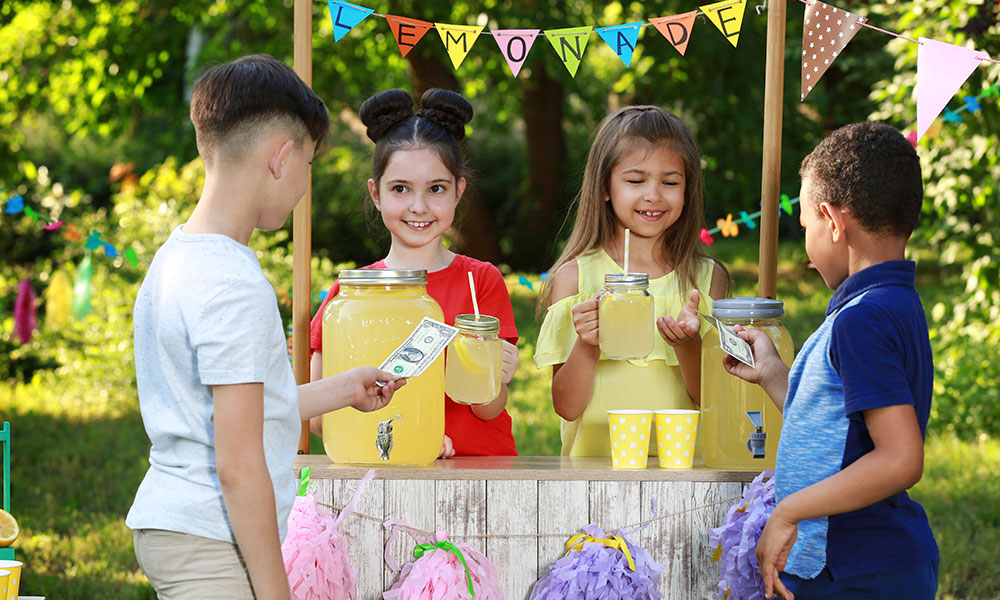
Summer is a time for a fun, but it can also present moments for learning. While school is out, introduce your child to financial literacy with age-appropriate learning opportunities centered on their summertime activities.
Elementary School
Summer is the perfect time for a neighborhood lemonade stand. If your child is selling homemade lemonade and treats from your driveway, encourage them to set goals for their earnings.
Saving: Has your child expressed interest in a new toy that is on the pricier side? Show them how to save up for it. First, place their money into a piggy bank or wallet of their own so they can see what they have.
Spending: When your child is ready to make their purchase, do the shopping together. At the register, let them give the money to the cashier and place any change back into their wallet. This puts value on their money.
Planning: Before doing any of the above, have a money chat with your child. Show them how much they made at their lemonade stand. Then weigh the options of purchasing an item they want now versus saving for an item they may want later.
Middle School
Maybe your child is taking on small jobs, like weeding the neighbor’s garden, or earning an allowance for completing chores. This is a great opportunity to show them the benefits of building their savings.
Saving: Encourage saving by matching a percentage of your child’s savings contributions each month. Start with 10% and increase it as they get older. Place their money in a jar labeled “earnings” and your contribution in a jar labeled “dividends.” This allows them to see the extra money they earn by saving while teaching them a new financial term.
Spending: Ask your child to contribute to small purchases, like a candy bar at the checkout line or movie snacks. Seeing the money come out of their savings jar will show them how even the smallest purchase can add up.
Planning: Introduce the concept of a budget by getting your child’s help in planning for a summer get-together. Create the menu, set the amount you will be spending, and shop together. See how under budget you can get by shopping weekly sales.
High School
At this point, your child may be working a summer job and earning a regular income. Build on the basics you’ve taught them by integrating financial services.
Saving: Help your child open a checking account with a local financial institution. They can use it to set up direct deposit for their paycheck and to build their money management skills.
Spending: If the financial institution allows, get your child a debit card for their account that you can monitor. Then encourage them to check their account often to review transactions and the account balance.
Planning: Assist your child with balancing their account regularly. Watching money go into and out of their account can help them with budgeting. It allows them to differentiate between necessary expenses, such as gas if they have a car, and impulse purchases. The account balance is a solid visual they can use to weigh their needs against their wants.
There are many ways you can teach financial literacy this summer. Just keep your lessons practical and fun!

